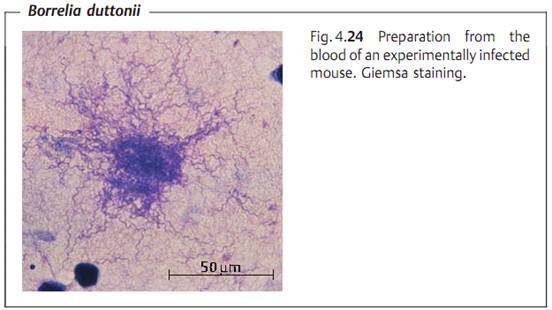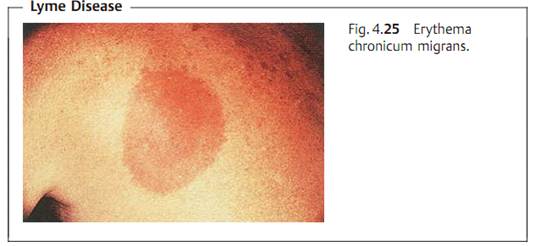

النبات

مواضيع عامة في علم النبات

الجذور - السيقان - الأوراق

النباتات الوعائية واللاوعائية

البذور (مغطاة البذور - عاريات البذور)

الطحالب

النباتات الطبية


الحيوان

مواضيع عامة في علم الحيوان

علم التشريح

التنوع الإحيائي

البايلوجيا الخلوية


الأحياء المجهرية

البكتيريا

الفطريات

الطفيليات

الفايروسات


علم الأمراض

الاورام

الامراض الوراثية

الامراض المناعية

الامراض المدارية

اضطرابات الدورة الدموية

مواضيع عامة في علم الامراض

الحشرات


التقانة الإحيائية

مواضيع عامة في التقانة الإحيائية


التقنية الحيوية المكروبية

التقنية الحيوية والميكروبات

الفعاليات الحيوية

وراثة الاحياء المجهرية

تصنيف الاحياء المجهرية

الاحياء المجهرية في الطبيعة

أيض الاجهاد

التقنية الحيوية والبيئة

التقنية الحيوية والطب

التقنية الحيوية والزراعة

التقنية الحيوية والصناعة

التقنية الحيوية والطاقة

البحار والطحالب الصغيرة

عزل البروتين

هندسة الجينات


التقنية الحياتية النانوية

مفاهيم التقنية الحيوية النانوية

التراكيب النانوية والمجاهر المستخدمة في رؤيتها

تصنيع وتخليق المواد النانوية

تطبيقات التقنية النانوية والحيوية النانوية

الرقائق والمتحسسات الحيوية

المصفوفات المجهرية وحاسوب الدنا

اللقاحات

البيئة والتلوث


علم الأجنة

اعضاء التكاثر وتشكل الاعراس

الاخصاب

التشطر

العصيبة وتشكل الجسيدات

تشكل اللواحق الجنينية

تكون المعيدة وظهور الطبقات الجنينية

مقدمة لعلم الاجنة


الأحياء الجزيئي

مواضيع عامة في الاحياء الجزيئي


علم وظائف الأعضاء


الغدد

مواضيع عامة في الغدد

الغدد الصم و هرموناتها

الجسم تحت السريري

الغدة النخامية

الغدة الكظرية

الغدة التناسلية

الغدة الدرقية والجار الدرقية

الغدة البنكرياسية

الغدة الصنوبرية

مواضيع عامة في علم وظائف الاعضاء

الخلية الحيوانية

الجهاز العصبي

أعضاء الحس

الجهاز العضلي

السوائل الجسمية

الجهاز الدوري والليمف

الجهاز التنفسي

الجهاز الهضمي

الجهاز البولي


المضادات الحيوية

مواضيع عامة في المضادات الحيوية

مضادات البكتيريا

مضادات الفطريات

مضادات الطفيليات

مضادات الفايروسات

علم الخلية

الوراثة

الأحياء العامة

المناعة

التحليلات المرضية

الكيمياء الحيوية

مواضيع متنوعة أخرى

الانزيمات
Borrelia
المؤلف:
Fritz H. Kayser
المصدر:
Medical Microbiology -2005
الجزء والصفحة:
7-3-2016
2985
Borrelia (Relapsing Fever, Lyme Disease)
Borrelia recurrentis is the pathogen of an epidemic relapsing fever transmitted by body lice that no longer occurs in the population of developed countries. B. duttonii, B. hermsii, and other borreliae are the causative pathogens of the endemic, tickborne relapsing fever, so called for the periodic relapses of fever characterizing the infection. The relapses are caused by bor-reliae that have changed the structure of the variable major protein in their outer membranes so that the antibodies produced by the host in the previous episode are no longer effective against them. Laboratory diagnostic confirmation requires identification of the borreliae in the blood. Penicillin G is the antibiotic of choice.
B. burgdorferi is the causative pathogen in Lyme disease, a tickborne infection. Left untreated, the disease has three stages. The primary clinical symptom of stage I is the erythema chronicum migrans. Stage II in the European variety is clinically defined by chronic lymphocytic meningitis Bann-warth. Meningitis is frequent in children. The primary symptoms of stage III are acrodermatitis chronica atrophicans Herxheimer and Lyme arthritis. Laboratory diagnostics comprises detection of specific antibodies by means of immune-fluorescent or EIA methods. Betalactam antibiotics are used to treat the infection. Lyme disease is the most frequent tick-borne disease in central Europe.
Borrelia that Cause Relapsing Fevers
Taxonomy and significance. The genus Borrelia belongs to the family Spir- ochaetaceae. The body louseborne epidemic form of relapsing fever is caused by the species B. recurrentis. The endemic form, transmitted by various tick species, can be caused by any of a number of species (at least 15), the most important being B. duttonii and B. hermsii.
Morphology and culture. Borreliae are highly motile spirochetes with three to eight windings, 0.3-0.6 µm wide, and 8-18 µm in length. They propel themselves forward by rotating about their lengthwise axis. They can be rendered visible with Giemsa stain (Fig. 4.24). It is possible to observe live bor-reliae using dark field or phase contrast microscopy.

Borreliae can be cultured using special nutrient mediums, although it must be added that negative results are not reliable.
Pathogenesis and clinical picture. B. recurrentis is pathogenic only in humans. The pathogens are transmitted by body lice. B. duttonii, B. hermsii, and other species are transmitted by ticks.
Following an incubation period of five to eight days, the disease manifests with fever that lasts three to seven days, then suddenly falls. A number of fever free intervals, each longer than the last, are interrupted by relapses that are less and less severe. The borreliae can be detected in the patient's blood during the febrile episodes. The disease got its name from these recurring febrile attacks. The relapses are caused by borreliae that have changed their antigen structure in such a way that the antibodies produced in response to the last proliferative episode cannot attack them effectively. Bor-reliae possess a highly variable gene coding for the adhesion protein VMP (variable major protein) in the outer membrane of the cell wall.
Diagnosis. Borreliae can be detected in patients' blood when the fever rises. They cannot be reliably cultured. One method is to inject patient blood i.p. into mice. After two to three days, the mouse develops a bacteremia that can be verified by finding the pathogens in its blood under a microscope.
Therapy. The antibiotic of choice is penicillin G. Alternatives include other betalactam antibiotics and doxycycline.
Epidemiology and prevention. B. recurrentis causes the epidemic form of relapsing fever, which still occurred worldwide at the beginning of the 20th century but has disappeared for the most part today. The pathogens are transmitted by the body louse. Prevention involves eradication of the lice with insecticides.
B. duttonii, B. hermsii, and other borreliae cause endemic relapsing fever, which is still observed today in Africa, the Near and Middle East, and Central America. This is a tick-borne disease. Here again, the main preventive measure is elimination of the insect vectors (ticks) with insecticides, especially in residential areas.
Borrelia burgdorferi (Lyme Disease)
Classification. The etiology of an increase in the incidence of acute cases of arthritis among youths in the Lyme area of Connecticut in 1977 was at first unclear. The illness was termed Lyme arthritis. It was not until 1981 that hitherto unknown borreliae were found to be responsible for the disease. They were classified as B. burgdorferi in 1984 after their discoverer. Analysis of the genome of various isolates has recently resulted in a proposal to sub- classify B. burgdorferi sensu lato in three species: B. burgdorferi sensu stricto, B. garinii, B. afzelii.
Morphology and culture. These are thin, flexible, helically wound, highly motile spirochetes. They can be rendered visible with Giemsa staining or by means of dark field or phase contrast microscopy methods.
These borreliae can be grown in special culture mediums at 35 °C for five to 10 days, although culturing these organisms is difficult and often unsuccessful.
Pathogenesis and clinical picture. The pathogens are transmitted by the bite of various tick species (see p. 607). The incubation period varies from three to 30 days. Left untreated, the disease goes through three stages (Table 4.12), though individual courses pattern. The presenting symptom in stage I is the erythema chronicum migrans (Fig. 4.25).


Diagnosis. Direct detection and identification of the pathogen by means of microscopy and culturing techniques is possible, but laden with uncertainties. In a recent development, the polymerase chain reaction (PCR) is used for direct detection of pathogen-specific DNA. However, the method of choice is still the antibody test (EIA or indirect immunofluorescence, Western blotting if the result is positive).
Therapy. Stages I and II: amoxicillin, cefuroxime, doxycycline, or a macrolide. Stage III: ceftriaxone.
Epidemiology and prevention. Lyme disease occurs throughout the northern hemisphere. There are some endemic foci where the infection is more frequent. The disease is transmitted by various species of ticks, in Europe mostly by Ixodes ricinus (sheep tick). In endemic areas of Germany, approximately 3-7% of the larvae and 10-34% of nymphs and adult ticks are infected with B. burgdorferi sensu lato. The annual incidence of acute Lyme disease (stage I) in central Europe is 20-50 cases per 100 000 inhabitants. Wild animals from rodents on up to deer are the natural reservoir of the Lyme disease Borrelia, although these species seldom come down with the disease. The ticks obtain their blood meals from these animals.
 الاكثر قراءة في البكتيريا
الاكثر قراءة في البكتيريا
 اخر الاخبار
اخر الاخبار
اخبار العتبة العباسية المقدسة

الآخبار الصحية















 "المهمة".. إصدار قصصي يوثّق القصص الفائزة في مسابقة فتوى الدفاع المقدسة للقصة القصيرة
"المهمة".. إصدار قصصي يوثّق القصص الفائزة في مسابقة فتوى الدفاع المقدسة للقصة القصيرة (نوافذ).. إصدار أدبي يوثق القصص الفائزة في مسابقة الإمام العسكري (عليه السلام)
(نوافذ).. إصدار أدبي يوثق القصص الفائزة في مسابقة الإمام العسكري (عليه السلام) قسم الشؤون الفكرية يصدر مجموعة قصصية بعنوان (قلوب بلا مأوى)
قسم الشؤون الفكرية يصدر مجموعة قصصية بعنوان (قلوب بلا مأوى)


















